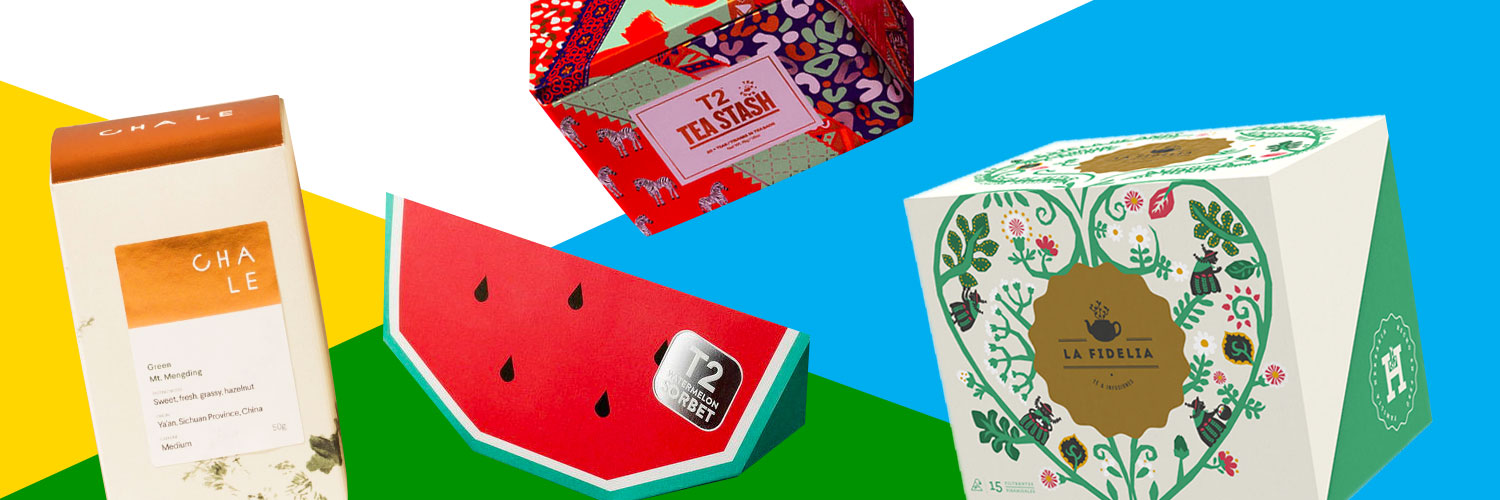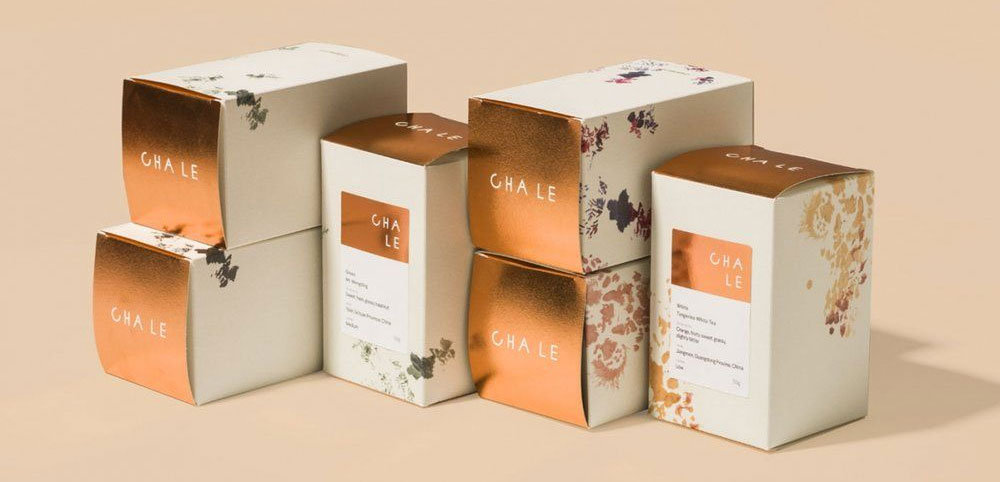In 2018, Americans consumed over 3.8 billion gallons of tea. For reference, that’s roughly the same volume as 6 Great Pyramids of Giza. In such an expansive market filled with thousands of options across a range of flavors and health benefits, competing companies need to convince consumers to buy their product. More often than not, a big part of that that effort takes the form of persuasive packaging design.
TEA & THE ART OF PRODUCT BOX DESIGN
Inspired tea packaging, like inspired liquor labels or coffee packaging, often achieves original effects in spite of fairly standard structural packaging. In the case of tea, it’s a small paperboard box that sets the standard (though, there are compelling exceptions).
Picture your local grocer’s tea section; on the shelves, there are likely many similarly sized paper boxes, offering similar products. Although every company begins with the same blank canvas, some have managed to stand out by reworking or perfecting current design trends, while others have struck off in their own eye-catching ways.
A healthy design ecosystem is one indication of the market’s growth, as the customized tea packaging market is expected to grow to $1957.5 million in 2026 (from 2020’s $1730.3 million). In this post, we’ll take a look at a few examples that can spark creativity and inspire some compelling design ideas.
SPARKLING PACKAGING WITH A LUXURY FEEL
Cha Le, a Vancouver-based tea company, set out to create simple, beautiful packaging that could stay true to their name’s meaning in Mandarin: “Happy Tea.” The design solution is straightforward at first glance— a restrained color palette of earth tones invokes high-quality, simple ingredients, while subtle watercolor images emphasize tea’s power of relaxation.
The packaging makes a statement despite the spare design, through a tactful application of metallic foils. The top of each box features a reflective copper surface that ties the entire aesthetic together beautifully. Overall, it strikes a perfect balance between showmanship and tranquility.
ANCESTRAL ART MEETS MODERN RETAIL PACKAGING DESIGN
La Fidelia’s product page displays their four types of tea and corresponding packaging. Each box design features a playful illustration inspired by the wildlife of Peru (where the tea itself is grown). A hinged paperboard carton lid frames a metallic logo seal, and allows for convenient access to the product.
In addition to receiving critical acclaim, the packaging has become the perfect emblem for the brand’s ambitious goal: creating a high-end tea that addresses the desires of modern consumers while staying true to the company’s Peruvian heritage.
FUN, FLAVORFUL AND (ECO-) FRIENDLY PACKAGING
In 2016, tea brand T2 wanted to add a little fun to some of its most popular flavors. More recently, as a brand already known for vibrant, bright flavors (and packaging, to boot!), T2 really had to get creative to raise the bar. The solution lay not purely in the complex imagery they typically lean on, but rather in creatively folded paperboard packaging. Each fruit flavored tea was carefully packaged in a box cut and structured folded to mimic the fruit, be it peach, watermelon, or banana.
INNOVATIVE PACKAGING IS EVERYONE’S CUP OF TEA
The tea industry might typically evoke feelings of mild tranquility, but that doesn’t mean the associated packaging can’t be exciting. Like so many consumer packaged goods (CPG) products, tea companies have to jostle for shelf space and compete with many other brands. That said, carving out a unique brand identity and letting the product packaging amplify it is always an effective strategy for getting your product off the shelves and into a cup of boiling water. For more packaging inspiration as we approach 2021, take a look at our recent report on upcoming trends in the packaging world, featuring examples from a range of industries like liquor, clothing, cosmetics, and more.




